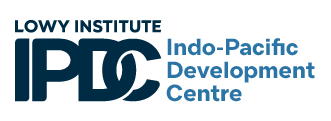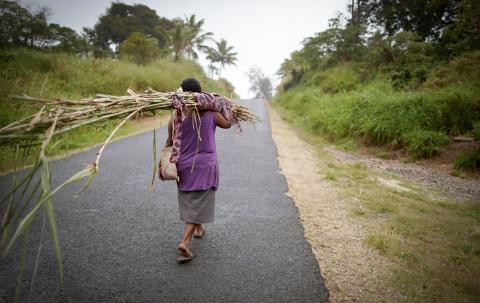The Australian government has released a new international development policy. Like all such policies, on its own it will not dramatically change the nature or performance of Australia’s development program. That will come down to implementation. And it will take time.
Nor has any additional funding been announced, either for now or signalled for anytime soon. This was already clear though from the last federal budget, which effectively locked in a stagnating aid budget in inflation-adjusted terms for the foreseeable future.
The new policy is, however, important in setting out how the government does plan to implement its promised “rebuild” of the Australian development program. It will not be about more dollars, despite the pernicious coupling of escalating need and a decade of aid budget cuts and stagnation under the previous government. Rather, it will be about rebuilding the commitment and ability of Australia to deliver a responsive and high-quality development program within what will remain a largely fixed resource envelope, at least for now.
Arguably, the most important aspect of the new policy is simply in clarifying the place of the development program within Australia’s broader statecraft. The policy makes clear that an effective development program is itself in Australia’s national interest, not merely as part of a competition for influence with China.
This is important. Not a reset to earlier times where development itself held primacy of purpose. But a recalibrating of the dial. To date, there has been too much focus in Australian policy circles as to whether and how the development program can be used to directly advance Australia’s geostrategic influence. The new policy does not end that discussion but should reduce its salience, freeing bandwidth to focus more once again on development effectiveness.

There will inevitably be continued pressure to use the development program to respond transactionally, and haphazardly, to geostrategic concerns. But a key implication of the new policy is that this should not be the overarching concern of the development program and those who manage it. The role of the Australian development program is to be effective in promoting a more prosperous and stable region on a basis of genuine partnership. If it can do this, it will have done its part in serving the national interest, including strengthening Australia’s influence.
What about the development specifics? There is a good amount to commend here.
A continued focus on gender equality and disability inclusion will be complemented by an increased focus on responding to climate risks across the program. An important element here is that when it comes to mitigation, this will be done in line with the Nationally Determined Contributions of each partner country. With Australia’s climate finance essentially coming out of existing aid allocations, this is essential to respecting the balance between decarbonisation and development each country has chosen, rather than imposing unwanted climate strings to Australia’s assistance.
Supporting civil society will also receive renewed focus, after having fallen off the priority list for some time despite concern about democratic backsliding and shrinking civic space in many parts of Australia’s region and elsewhere.
There are also some good signs on locally led development. First, by recognising the invaluable role played by local staff working on Australia’s development program and committing to rebuild this asset. And second, by acknowledging that reducing “transaction costs” (i.e. risk aversion and red tape) coming from the Australian side will be key to truly enhancing locally led development.
Much discussion has focused on the need to rebuild staff capabilities in development since the integration of Australia’s former aid agency into the Department of Foreign Affairs and Trade (DFAT). The new policy has some focus on this but states it will be a long-term endeavour. More immediately useful is a commitment to re-establishing a focus on planning, performance and transparency – all key aid fundamentals that have atrophied and where improved systems would also help sustain the pressure to continually enhance internal capabilities.
Another vital element of strengthening Australia’s development capabilities is the effective use of new financing instruments (notably loans, guarantees and equity investments) that can deliver greater scale and new forms of impact. It is important that the new policy was accompanied by the public release of the development finance review commissioned last year by the government.
The review reaffirms the relevance of continuing Australia’s use of a variety of new financing instruments. But again, rather than dollars, the focus is more on strengthening oversight and ensuring quality. Notably, Australia’s portfolio of development finance investments has rapidly expanded in recent years to over A$7 billion and growing. The vast majority of these billions are in the form of budget and infrastructure loans to the Pacific, where most countries are judged to be at high risk of debt distress and elevated global interest rates pose a serious complication.
Yet it is notable that there is limited ambition to make greater use of non-grant financing in the emerging economies of Southeast Asia – where the scope for doing so effectively is much stronger. The only major outcome (already announced in the last budget) is to expand the investment cap for Australia’s Southeast Asia impact investment fund, which seems to be performing well, from its present A$40 million to a targeted A$250 million.
Indeed, the new policy can only be described overall as one of constrained ambition. There is no scale-up in aid or broader development financing envisioned nor any major structural changes to the way this is managed and delivered. Despite the welcome emphasis on quality, there will be no return of the Office of Development Effectiveness or similar. And despite the need and opportunity, there will be no dedicated Australian development finance institution (though the government has left the future possibility open) or anything else similarly ambitious.
The new policy is also almost entirely focused on Australia’s immediate Indo-Pacific neighbourhood, in practice defined as the Pacific and Southeast Asia. That might be the regrettable political and geopolitical reality. But it would be beneficial for the government to at least better articulate how it then sees its approach to global development and the multilateral architecture that supports this.
Another issue is in terms of development priorities. Although there is some reference to poverty reduction and the UN Sustainable Development Goals, the new policy framework instead focuses on much less well-defined objectives around supporting effective and accountable states, resilience, connectivity to Australia and regional architecture, and global collective action. For some, this might make for a better narrative. But, by putting these front and centre rather than hard development outcomes, it risks diluting focus on the best ways Australia can have a positive development impact.
The policy, thus, has its shortcomings. Still, it represents an important recalibration and one that can hopefully be built upon. The necessary first step will be implementing it well.


